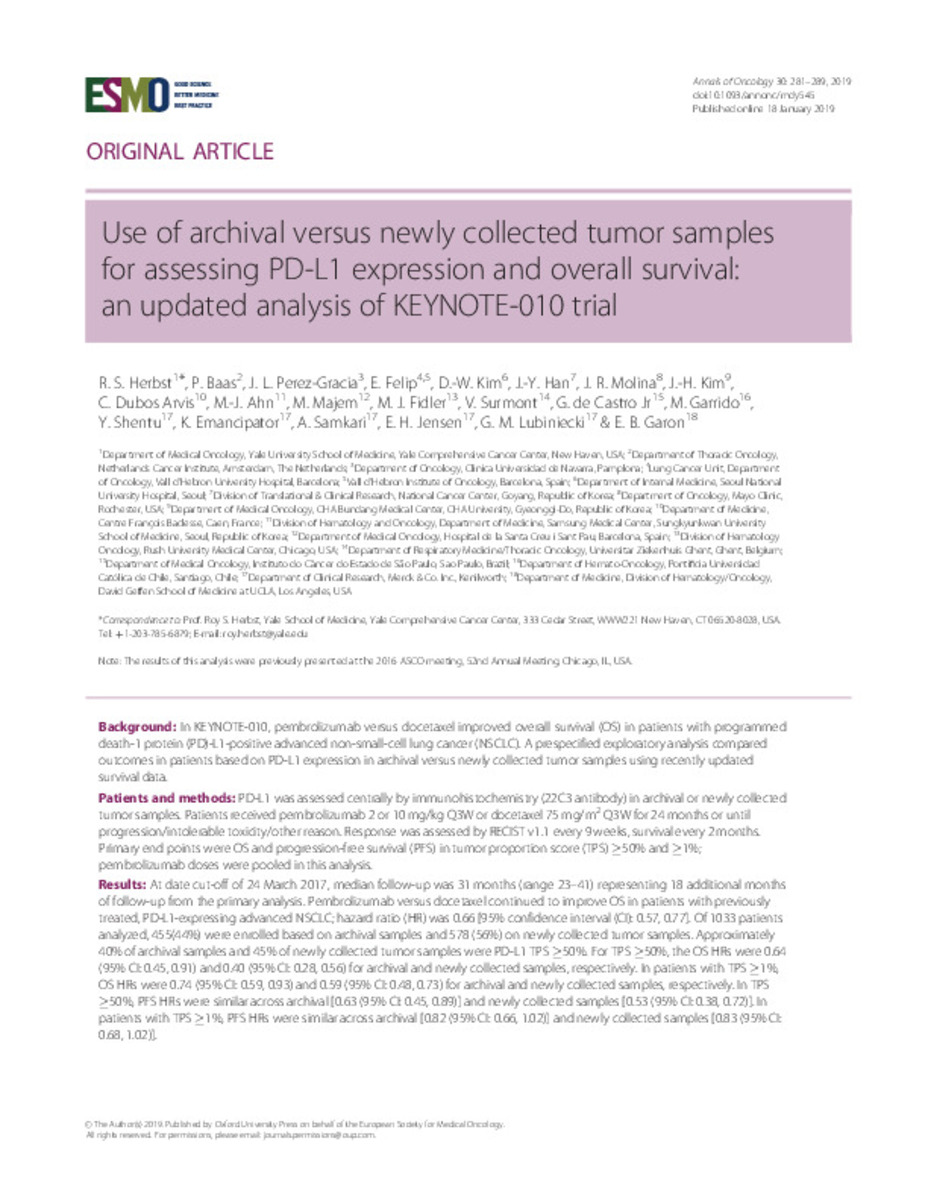Use of archival versus newly collected tumor samples for assessing PD-L1 expression and overall survival: an updated analysis of KEYNOTE-010 trial
Palabras clave :
Materias Investigacion::Ciencias de la Salud::Oncología
PD-L1 expression
Pembrolizumab
Tumor samples
Fecha de publicación :
2019
Cita:
Herbst, R.S. (Roy S.); Baas, P. (P.); Perez-Gracia, J.L. (Jose Luis); et al. "Use of archival versus newly collected tumor samples for assessing PD-L1 expression and overall survival: an updated analysis of KEYNOTE-010 trial". Annals of Oncology. 30, 2019, 281 - 289
Aparece en las colecciones:
Estadísticas e impacto
0 citas en

0 citas en

Los ítems de Dadun están protegidos por copyright, con todos los derechos reservados, a menos que se indique lo contrario.










